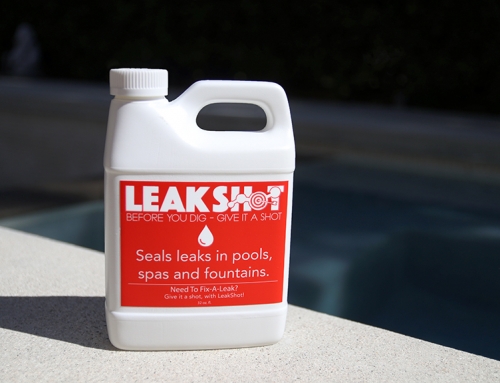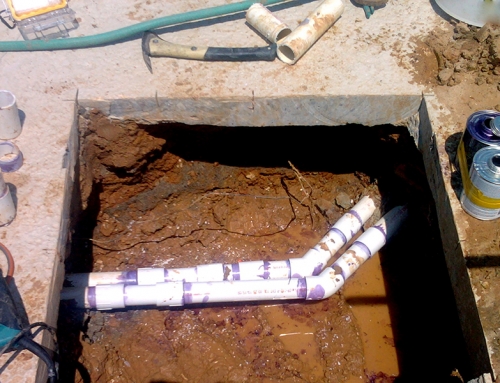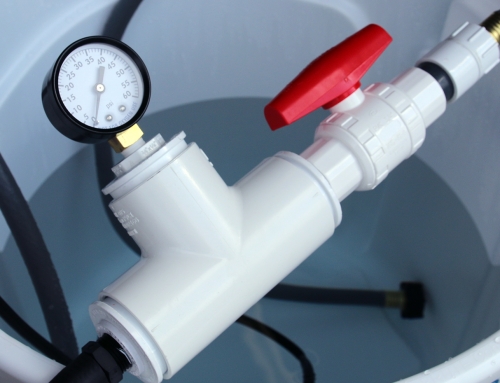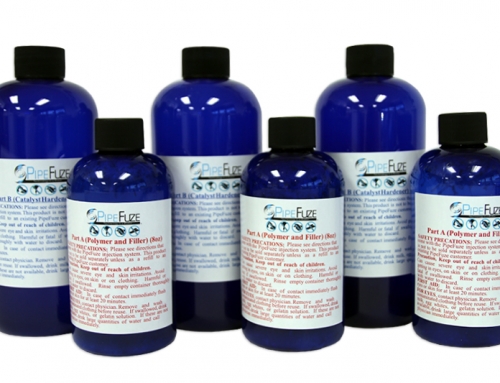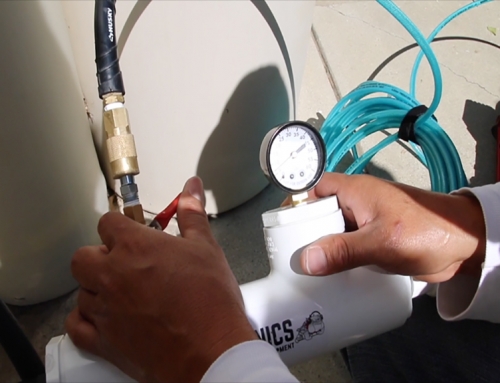Knowing you’ve got a return line leak is harrowing and finding a way to fix that leak without the cost and aggravation of excavating a section of your patio to make repairs is always a better thought. There are things to consider before using Pipe Fuze that you want to take into account before your application of the 2-part sealer, but if you meet the criteria, Pipe Fuze can spare you thousands of dollars in repair costs.
We like to start by looking at the rate of pressure loss in the pipe. This is going to require that you isolate the pipe, however, knowing where the leak is first is going to spare you a lot of time and effort. If the pressure drop is 5 pounds or less in 30 seconds, Pipe Fuze will likely solve your leak issue. A professional leak detection is recommended to know what you’re dealing with before you start making guesses as to if the product will work for your application.
A lot of pool owners call because they know their return line is leaking and it runs under concrete they don’t want disturbed. Common questions revolve around having multiple returns on a pool wall. How do I know which return is the offending leaker? Is it even in the return line? How do I seal all of them?

To start, knowing if it’s the return line starts with a static line test, with the equipment off. Plug each of the returns with a tapered plug, one with a small hole in the middle. We recommend something we call Cane Plugs, literally the rubber stopper off the bottom of a walking cane, available at any Home Depot store. When all of the returns are plugged, put dye, or watered down food coloring in front of the plug with the hole in it. If the hole ingests the dye, it’s revealing that there is a leak in the pipe and it’s pulling water through the pipe, escaping through the leak. We’ve begun our isolation.
If a pool has three returns, all attached to the same pipe that runs to the equipment, the leak could be in that pipe anywhere. A trained professional will employ bursts of air into the line to create a boiling sound at the leak. Listening underground with a Deck Plate or Soil Probe (we use LeakTronics equipment), a leak detection technician can identify where the leak occurs. By knowing where it is will help to decide how you will inject the Pipe Fuze liquids. The reason being, the Pipe Fuze must pass through every conceivable area of the inside of the Pipe to seal any leaks if you don’t know where the leak is. If you know the leak is between one specific return and the pipe at the equipment, you can inject the fluids in a way that just passes the known area of the leak and it will save you time and expense.
If you are aware that the lines are leaking but don’t know where, it is recommended that you plug the returns and inject through one return at a time. The process may take longer, but it will provide the best coverage for the entire plumbing line.
With the pipe cut for access at the equipment, we cycle the Pipe Fuze fluids through the first and farthest return, through the line and back into the pail where the pump sits. It returns the fluid, like a circuit and cycles it through the line. After a pre-determined amount of time, maybe an hour, repeat this process through each return. At a point in the process, you’ll likely note that the water in the pail has stopped dropping. This means it is staying in the pipe and the leak has been sealed. Circulate the Part B fluid for an hour and evacuate the pipe. You can return the pool to service and enjoy a leak free swim.
At any time, you can call a Pipe Fuze representative at 818-436-2953 to discuss your situation and to see if Pipe Fuze is the right application for your suspect pipe leak and spare the expense of construction to make it stop.
Learn more about Pipe Fuze by visiting https://pipefuze.com or call 818-436-2953 today.

